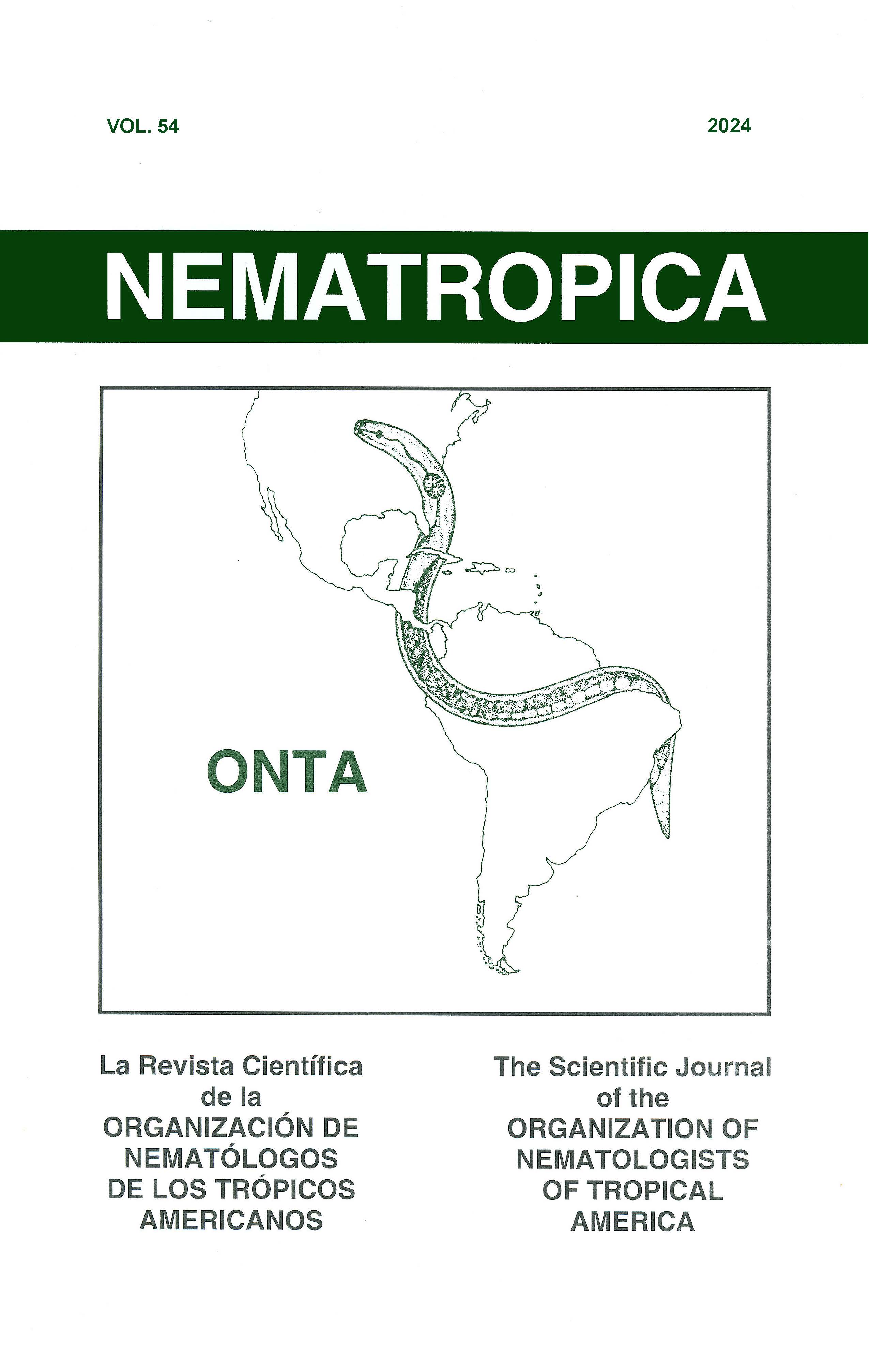MANAGEMENT OF ROOT-KNOT NEMATODES IN A SUSCEPTIBLE COFFEA ARABICA CULTIVAR WITH NEMATICIDES
Abstract
Coffee production is of great economic importance in Brazil. Several phytosanitary problems can cause yield losses, including plant-parasitic nematodes. This study aimed to compare the efficacy of nematicides for the control of Meloidogyne paranaensis and M. exigua in the susceptible coffee cultivar ‘IPR 107’. Experiments were conducted under greenhouse conditions. The following treatments were evaluated: the biological nematicides Bacillus subtilis + B. licheniformis, Pochonia chlamydosporia, Purpureocillium lilacinum, Trichoderma harzianum, and the chemical nematicide fluensulfone. Inoculated and non-inoculated controls were also included. Evaluation of nematode multiplication was performed 150 days after inoculation (DAI) and expressed as reproduction factor (RF = final population density/initial population density) values. None of the biological nematicide were effective in reducing nematode densities when applied at planting or 30 DAI. Fluensulfone reduced RF values of both nematodes, either when applied at planting and 30 DAI. All the biological nematicides, except P. chlamydosporia, improved the development of plants inoculated with M. paranaensis. These results reinforce the difficulty of managing plant-parasitic nematodes in perennial crops such as coffee with biological nematicides, especially when the nematode is so aggressive to the plants, such as M. paranaensis.

